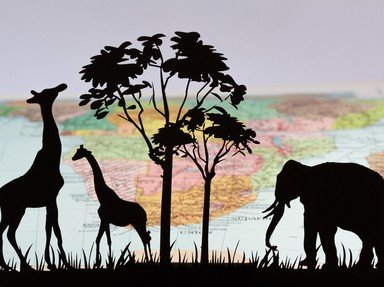Quiz Answer Key and Fun Facts
1. Ethology had its beginnings in the late 19th Century. In 1914 Julian Huxley described the ritualised courtship display of a handsome British water bird, which involves pairs posing, head-shaking and running along the surface of the water side-by-side holding bunches of waterweed. What's the name of this bird?
2. Three scientists shared a Nobel Prize in 1973 for laying the foundations of modern Ethology. One of them was Konrad Lorenz, who was interested in instinctive behaviour, i.e. behaviour that is not learned but inborn. In his work with greylag goose chicks he described an innate behaviour that greatly increased their chances of survival. What is this behaviour called?
3. Another of the three Nobel laureates in 1973 was the Austrian ethologist Karl von Frisch. In 1927 he published his book "The Dancing Bees" in which he described how honey bees would "dance" on the surface of a honeycomb. What were the "dancing bees" doing?
4. The third Nobel laureate in 1973 was the Dutch biologist Niko Tinbergen. Like Lorenz he was interested in instinctive behaviour, and during his work with gulls he noticed that the adults of some species have a red spot on their lower bills. What seems to be the function of these spots?
5. Why do some birds - for example geese, cranes, pelicans and ibis - fly in V-shaped formations called skeins?
6. Jane Goodall is a world authority on chimpanzees and their behaviour, having studied them at Gombe Stream National Park in Tanzania for over 60 years. One of her remarkable discoveries was that chimpanzees were not vegetarian as previously thought; rather, they would systematically hunt and eat smaller primates such as colobus monkeys. Another of her findings was that chimpanzees displayed a particular behaviour that was thought to be exclusively human. What is this behaviour?
7. Animals communicate in many ways, visible and non-visible. One of the non-visible means is the secretion by an animal of a chemical messenger that is usually detected by the olfactory system of another individual of that species and triggers a behavioural response. These chemical messengers have a name derived from the ancient Greek words for "to bear" and "hormone" - what are they called?
8. Before she was murdered by poachers, Dian Fossey uncovered much of what was previously unknown about the behaviour of mountain gorillas during her 20 years of work in Rwanda. One discovery was that troops of gorillas normally consisted of one adult male and a number of females with their offspring. The adult male could be distinguished from all the other gorillas in the troop by its differential hair colouring. What are these adult males called?
9. The mallard, Anas platyrhynchos, is one of the commonest and most widespread species of duck. However the period of their courtship and mating is mayhem - can you say what behaviours male mallards have been observed doing during this period?
10. Turning now to human behaviour, in 1976 in his book "The Selfish Gene" Richard Dawkins coined a new word to describe the concept of an idea, behaviour or style that becomes popular and thus by imitation spreads through a human culture. What is this word?
Source: Author
Southendboy
This quiz was reviewed by FunTrivia editor
rossian before going online.
Any errors found in FunTrivia content are routinely corrected through our feedback system.
